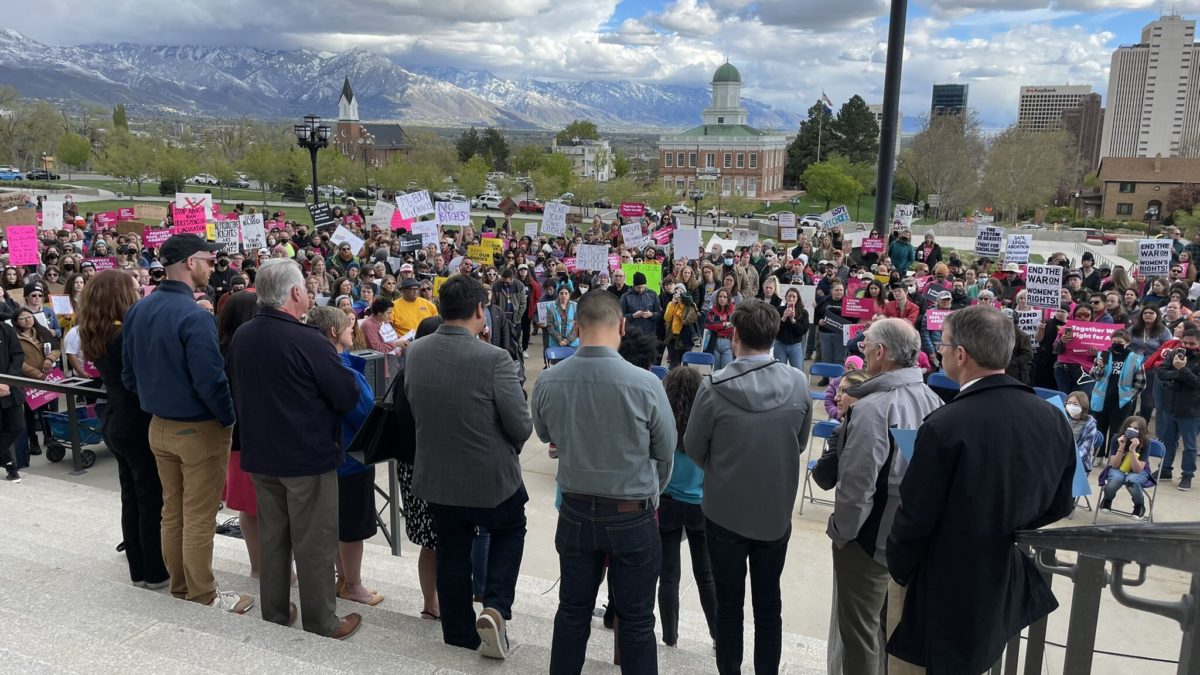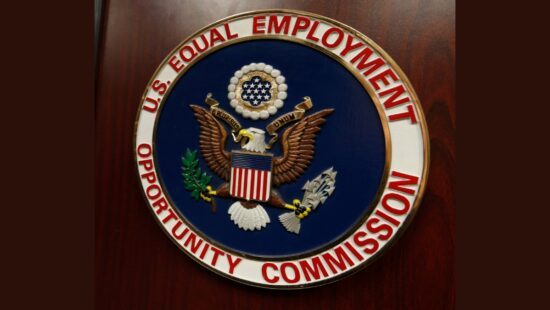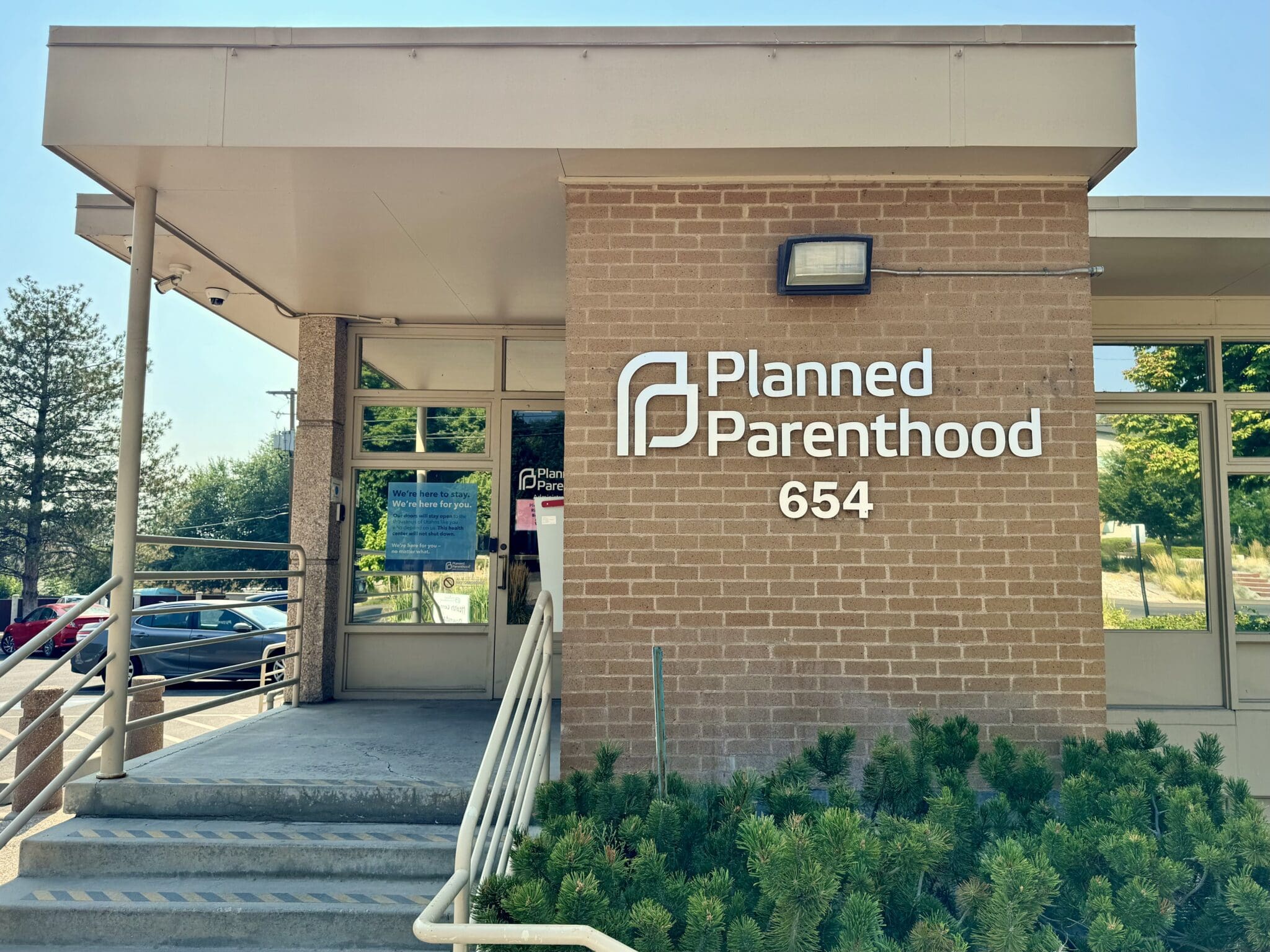News
A year after fall of Roe, 25 million women live in states with abortion bans or tighter restrictions

A pro-abortion rights protest at the Utah State Capitol in July 2022. Photo: Salt Lake City Office of the Mayor
One year ago Saturday, the U.S. Supreme Court rescinded a five-decade-old right to abortion, prompting a seismic shift in debates about politics, values, freedom and fairness.
Twenty-five million women of childbearing age now live in states where the law makes abortions harder to get than they were before the ruling.
Decisions about the law are largely in the hands of state lawmakers and courts. Most Republican-led states have restricted abortion. Fourteen ban abortion in most cases at any point in pregnancy. Twenty Democratic-leaning states have protected access to abortion.
Here’s a look at what’s changed since the Dobbs v. Jackson Women’s Health Organization ruling.
LAWS HAVE BEEN ENACTED IN 25 STATES TO BAN OR RESTRICT ABORTION ACCESS
Last summer, as women and medical providers began to navigate a landscape without legal protection for abortion, Nancy Davis’ doctors advised her to terminate her pregnancy. The fetus she was carrying had no skull and was expected to die soon after birth.
But doctors in Louisiana, where Davis lived, would not provide the abortion due to a new law banning it throughout pregnancy in most cases.
Davis became one of the women whose stories, told on news sites and network news, in newspapers and blogs, illustrated the shifting ground doctors and their patients tried to navigate.
At the same time, abortion opponents who worked for decades to abolish a practice they see as murder cheered the Supreme Court’s Dobbs ruling. Anti-abortion groups said the 1973 Roe v. Wade ruling that legalized abortion nationwide was undemocratic because it prevented states from enacting bans.
“The Dobbs decision was a democratic victory for life that generations fought for,” said E.V. Osment, a spokeswoman for Susan B. Anthony Pro-Life America, a major anti-abortion group.
While some states scrambled to pass new restrictions, others already had enacted laws that were designed to take effect if the court overturned Roe.
More than 25 million women ages 15 to 44, or about 2 in 5 nationally, now live in states where there are more restrictions on abortion access than there were before Dobbs. More than 5.5 million more live in states where restrictions have been adopted but are on hold pending court challenges. Bans on abortion no later than 12 weeks into pregnancy are on the books in nearly every state in the Southeast — though some are not in effect.
Many laws that make exceptions for medical emergencies do not clearly define those situations. After Davis went public with her challenges last year, Louisiana lawmakers debated whether doctors in the state were right to deny her an abortion under a law that has exceptions for “medically futile” pregnancies and when there’s a substantial risk of death or impairment for the woman. But the Legislature made no changes to clarify the law.
Davis is among a number of women who ended up traveling out of state to have a legal surgical abortion. She got help from a fund that raises money for women to travel for such purposes.
With her fiancé by her side, Davis flew to New York in September, when she was about four months pregnant. The whole experience was heartbreaking, she said.
“A mother’s love starts as soon as she knows she’s pregnant. That attachment starts instantly,” she said. “It was days I couldn’t sleep. It was days I couldn’t eat.”
ABORTION ACCESS HAS BEEN PROTECTED IN 20 STATES
As some states restricted abortion, others locked in access. Clinics moved across state lines, added staff and lengthened hours to accommodate women leaving their home states to end their pregnancies.
In 25 states, abortion remains generally legal up to at least 24 weeks of pregnancy. In 20 of those states, protections have been solidified through constitutional amendments or laws. Officials in many of those states, including California, Colorado, Minnesota, New Mexico and New York, have explicitly invited women from places where the procedure is banned.
Women have flocked to states with legal access.
CHOICES Center for Reproductive Health had for decades treated patients in Memphis, Tennessee, some seeking abortions. After Tennessee’s abortion ban kicked in last year, the clinic opened a second outpost that’s about a three-hour drive away, in Carbondale, Illinois, a state that has positioned itself as an oasis for abortion access.
“I would say 80% or more of our patients continue to come from the communities that CHOICES has always taken care of,” said CEO Jennifer Pepper, who said the Illinois clinic sees on average 350 patients a month. “They’re coming from Tennessee, Mississippi, Arkansas and even Texas, but now they’re having to travel much farther.”
Kansas is one of the closest places to obtain abortions for people in parts of Missouri, Arkansas, Oklahoma and Texas. A new clinic opened in Kansas City, Kansas, four days before Dobbs. Within weeks, the clinic was overwhelmed. Even after lengthening hours, hiring staff and flying in physicians, it’s been able to take only about 10% to 15% of people who have sought an abortion there.
Dr. Iman Alsaden, the Planned Parenthood medical director based in Kansas, said most patients in the Kansas clinics are now coming from elsewhere.
“You’re in a really, really dire public health situation when you are looking at someone who had to jump through endless amounts of hoops just to make this work and saying they’re so lucky they’re able to do this,” Alsaden said.
In anticipation of out-of-state patients, states such as Hawaii have passed laws to allow more health care workers, such as nurse practitioners, to provide abortions. In New Jersey, officials late last year announced a grant to train more medical professionals to perform the procedures.
THE NUMBER OF ABORTIONS IS NOT CLEAR
Because of reporting lags and gaps in data, the impact on the number of abortions provided across the U.S. is not completely clear. But the authors of #WeCount, a survey conducted for the Society of Family Planning, a nonprofit organization that promotes research and supports abortion access, say the monthly average went down after Dobbs.
The group’s data finds that the number of abortions provided through clinics, hospitals and other providers in states where bans were put in place plummeted to nearly zero. The tracking effort collects monthly data, providing a snapshot of abortion trends after Roe v. Wade was overturned. It does not reflect self-managed abortions, relies on estimates in places where providers do not supply data and does not fully account for seasonal differences in pregnancies or abortions.
Still, it’s the fullest national picture available for now. The federal Centers for Disease Control and Prevention data covering 2022 is not likely to be released until late 2024. Even then, the picture won’t be completely clear: Not every state collects abortion data, and what is collected does not include self-managed abortions provided outside clinics, hospitals and doctor’s offices.
In Louisiana, where abortion was legal until 22 weeks’ gestational age before Dobbs, the state reported more than 7,400 abortions in 2020, the last year for which full data was available. #WeCount found there were an average of 785 a month in April and May 2022 — and fewer than 10 every month since the ban there has been in place.
There are similar trends elsewhere. In Idaho, 1,700 abortions were reported in 2020, and #WeCount found fewer than 10 a month recently. In Texas, state data shows only a handful of abortions monthly from August through January. Before restrictions there took effect in 2021, there were often more than 5,000 per month.
The #WeCount survey of abortion providers has found that the overall average number of abortions at clinics and hospitals was lower in the months after the Dobbs ruling, from July 2022 through March but that the number of abortions has risen dramatically in states that border those with no access, such as Illinois, Kansas, New Mexico and North Carolina. In Illinois, for instance, the survey tallied about 5,600 abortions in April 2022 and more than 7,900 in March 2023.
PILLS ARE AN EVEN MORE DOMINANT ABORTION METHOD
Even before the court ruled, most abortions in the U.S. were done through a two-pill regimen, not a surgical procedure. Now groups are using medication to provide access — however illegal — in states where abortion is banned.
For example, Aid Access works with doctors overseas and in states with shield laws, which are intended to bar abortion-related investigations by other states. Those doctors prescribe the medications and Aid Access ships them. It saw requests in a sample of 30 states more than double from before a draft of the Dobbs ruling was leaked last year until it became official and bans started taking effect.
The group’s Netherlands-based founder and director, Rebecca Gomperts, believes most U.S. women who want abortions are still managing to get them.
“The fact that the abortion pill is available,” she said, “that makes the tragic of it much less profound.”
Still, she said, those who struggle the most for access are poor and Black women.
The move from surgical to medication abortion has frustrated abortion opponents, who have taken their case to court. Some abortion opponents are calling for the abortion drug mifepristone to lose its 23-year-old approval from the U.S. Food and Drug Administration. The Supreme Court has preserved access for now.
SOME STATES ARE INCREASING SUPPORT FOR MOMS AND CHILDREN
One ripple from overturning Roe in conservative states has been a new willingness to adopt measures such as improving foster care and benefits for postpartum women.
Mississippi, where the Dobbs case originated, is a key example. Republican Gov. Tate Reeves signed off on several proposals that he deemed as the “next phase” of the “pro-life agenda.” This included expanding a tax credit from $3.5 million a year to $10 million a year for people or businesses who donate to anti-abortion centers, which provide diapers, clothing and other assistance for pregnant women and have been accused of providing misleading information to steer women away from abortion. He also approved creating an income tax credit of up to $10,000 for adopting a child who lives in Mississippi and $5,000 for a adopting a child from outside the state.
He also agreed to extend Medicaid health insurance coverage for lower-income women until a year after they give birth, rather than just two months.
The state’s two Catholic bishops sent a letter to lawmakers and Reeves in February calling for the Medicaid expansion.
“This they felt was consistent with the intent of Dobbs,” Jackson Bishop Joseph Kopacz said in an interview, “saying that it can’t stop at birth.”
For Shannon Bagley, the executive director of the Center for Pregnancy Choices, an anti-abortion center just outside Jackson that will benefit from the expanded tax credit, said it’s offering more parenting classes and focusing on helping eligible women sign up for Medicaid, job search assistance and offering donated car seats, cribs and other baby items.
“This is a new era and we’re going to have to be more and we’re going to have to do more,” she said.
LAWSUITS ABOUND
In conservative Utah, a ban on abortions throughout pregnancy took effect almost immediately after the Dobbs ruling. But the next day, the state’s Planned Parenthood affiliate challenged the law, saying it violated the state constitution.
A judge put the ban on hold while the case works its way through the courts.
It’s one of more than 50 lawsuits filed on abortion policy since the Dobbs ruling. Lawsuits have been the foundation of the abortion debate for decades, but now the burden is on abortion-rights advocates to prove that restrictions are too harsh, rather than on anti-abortion groups to prove they are justified.
Many challenges rely on arguments about the rights to personal autonomy or religious freedom. A Texas lawsuit alleges women were denied abortions even when their lives were at risk.
Bans or restrictions are on hold in at least six states while judges sort out their long-term fate. The only states where a top court has permanently rejected restrictions since the Dobbs ruling are Iowa and South Carolina. In the latter, lawmakers later adopted a new ban, but enforcement is on hold due to a court challenge.
In Utah, lawmakers this year passed a first-in-the-nation law banning abortion clinics. But a judge put enforcement of that on hold, too, while the court case plays out.
CRIMINAL COURTS HAVE NOT BEEN BUSY WITH ABORTION CASES
There’s little evidence that doctors, women, or those who help them get abortions are being prosecuted.
In Mississippi, the state attorney general’s office says no charges have been brought under a new law that calls for up to 10 years in prison for anyone who provides or attempts to provide an abortion in cases where it wasn’t to save the woman’s life or to end a pregnancy caused by rape or incest.
Progressive prosecutors across the country, including in states with bans, have said that they would not pursue abortion-related cases, or that they would make them a low priority. One in Florida was suspended from his job for it by Republican Gov. Ron DeSantis.
James Bopp Jr., general counsel to the National Right to Life committee, finds it troubling that prosecutors would not pursue abortion cases. He said it’s a change from the era before Roe v. Wade, when most states restricted abortion.
“They were going to enforce the laws; there was no question they were going to do that,” Bopp said. “That was their obligation.”
Legislative efforts to classify abortion as homicide or murder in South Carolina, Kentucky and Louisiana also have sputtered.
“The question about punishing the pregnant person is going to become the existential question in the anti-abortion movement,” said Greer Donley, an abortion law expert and associate professor at the University of Pittsburgh School of Law.
But Bopp said prominent anti-abortion groups like his oppose such measures. He said women who pursue abortions are “victims of the abortion culture, victims of men, particularly wealthy men.”
ABORTION REMAINS A DOMINANT POLITICAL ISSUE
The political table has been reset, with Republicans entering a new election season weighing how to balance the interests of a base that wants the strictest bans possible against the desires of the broader electorate.
Polling has consistently found that most Americans think abortions should be available in at least some circumstances, including early in a pregnancy, but that most also favor restrictions later in a pregnancy. Polling from The Associated Press-NORC Center for Public Affairs Research has found that the majority opposed banning abortion in the first six weeks of pregnancy, but most also favor barring abortions after 24 weeks of pregnancy. Only six states have no limit, and abortion is rare after 21 weeks.
Last year, voters sided with abortion-rights advocates in all six states with abortion-related ballot measures, including in generally conservative Kansas and Kentucky. The issue was also a major factor in why Democrats performed better than expected in 2022 elections.
There are pushes for ballot measures to protect abortion access in several states, including Ohio.
In Indiana, South Carolina and West Virginia — all states that have adopted bans since Dobbs — the legislative battles were not between Democrats and Republican over whether to impose restrictions but among Republicans on just how far to go.
Susan B. Anthony Pro-Life America believes the issue could be a boost for conservatives with the right framing. The group announced this year that it’s working with Kellyanne Conway, a former Trump adviser, to “get pro-life candidates on offense in the 2024 election cycle.”
PROGRESSIVES WORRY ABOUT OTHER RIGHTS
Among advocates on the left, a lot of alarm bells rang over Justice Clarence Thomas’ concurring opinion in Dobbs. “We should reconsider all of this Court’s substantive due process precedents,” including cases that found married people have the right to obtain contraceptives, people can engage in private, consensual sex acts and the right to same-sex marriage, Thomas wrote.
So far, measures on those areas have not gained traction. State legislation on contraceptives has aimed only to guarantee or protect access to it, and President Joe Biden last year signed a law to safeguard same-sex marriage.
Instead, Republican lawmakers in many states focused in 2023 on restricting gender-affirming care, especially for transgender minors.
___
By GEOFF MULVIHILL, KIMBERLEE KRUESI and CLAIRE SAVAGE
Mulvihill reported from Cherry Hill, New Jersey, Kruesi from Nashville and Savage from Chicago. Emily Wagster Pettus in Jackson, Mississippi, contributed.




















